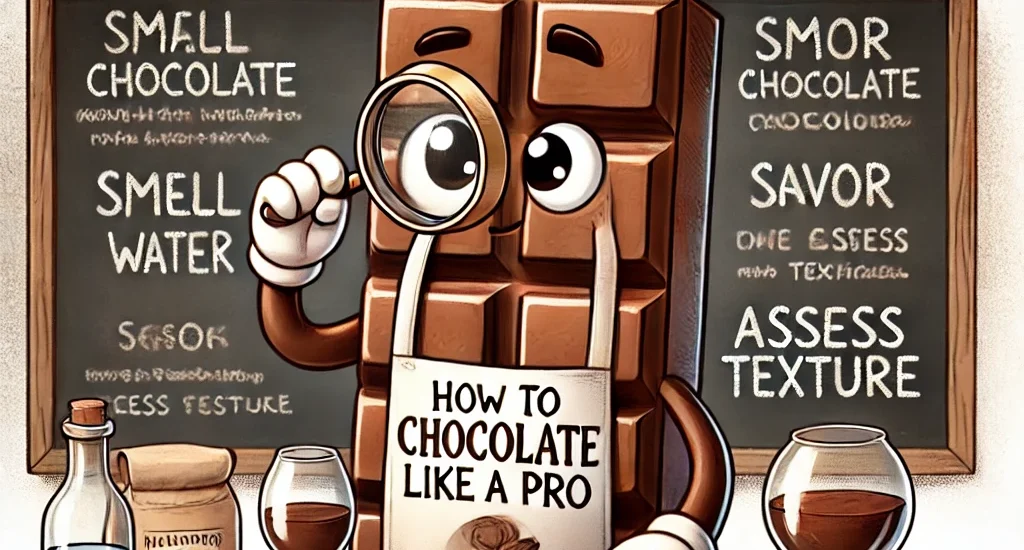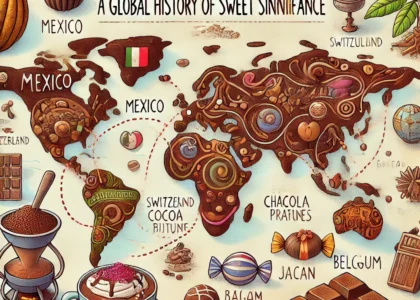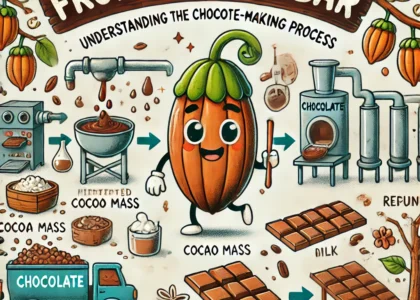Introduction
Chocolate is more than a sweet indulgence—it’s a deeply nuanced food with a sensory profile as complex as wine or coffee. While many of us enjoy chocolate casually, few experience it the way professional chocolatiers and sensory experts do. Learning how to taste chocolate like a connoisseur not only enhances your appreciation for this ancient delicacy but also reveals the remarkable craftsmanship behind each bar.
This article walks you through the bean-to-bar journey, the sensory techniques used by chocolate professionals, and how to develop your own tasting palate—making each bite an exploration of terroir, process, and purity.
1. From Cacao Pod to Chocolate Bar: A Quick Overview
The journey of fine chocolate begins in the tropics, where Theobroma cacao trees produce large, colorful pods filled with cacao beans. These beans undergo a meticulous process before they ever become the confections we know and love.
Key Steps in Chocolate Production:
- Harvesting: Ripe cacao pods are hand-picked from trees and cracked open to extract the beans and pulp.
- Fermentation: Beans are fermented for 2–7 days, crucial for developing flavor precursors.
- Drying: Sun-drying reduces moisture, locking in aromas and halting fermentation.
- Roasting: Beans are roasted to develop chocolate’s characteristic flavor and reduce bitterness.
- Winnowing: Removal of outer shells to isolate the edible nibs.
- Grinding and Conching: Nibs are ground into a paste (liquor), then refined for hours to smooth texture and balance flavor.
- Tempering and Molding: Chocolate is cooled and reheated in a controlled manner for glossy finish and snap, then molded into bars or shapes.
2. Understanding Fine Chocolate
Tasting high-quality chocolate requires distinguishing it from mass-market varieties. “Bean-to-bar” producers focus on single-origin cacao, minimal ingredients, and ethical sourcing. Look for bars with:
- 70–90% cacao content (for dark chocolate)
- Simple ingredient lists (e.g., cocoa, cocoa butter, sugar)
- No artificial flavors or oils
Origin, processing methods, and even seasonal climate affect the final taste, giving rise to chocolate with regional identities—much like wine.
3. The Five Senses of Chocolate Tasting
Professional chocolate tasters use all five senses to evaluate a sample. Here’s how to guide your own tasting session:
1. Sight
Examine the surface of the chocolate under good lighting.
- Should be smooth and glossy with no white streaks (bloom)
- Snap off a piece—high-quality tempered chocolate makes a clean, crisp sound
- Uniform color indicates proper conching and tempering
2. Touch
Hold the chocolate between your fingers briefly.
- It should melt slowly, responding to body temperature
- Texture should be firm but not brittle
3. Smell
Inhale the aroma deeply before tasting.
- Notes might include: fruity, nutty, floral, earthy, spicy, or woody
- Fine chocolate carries a complex bouquet, often revealing the origin or fermentation process
4. Taste
Place a small piece on your tongue and let it melt slowly—avoid chewing immediately.
- Observe the initial flavor, the middle development, and the finish (aftertaste)
- Fine chocolate evolves through flavor waves, often beginning with bitterness and moving to sweetness or fruitiness
- Note textures: creamy, velvety, gritty, dry?
5. Sound
Though subtle, the snap of chocolate is important—it indicates proper tempering.
4. Common Chocolate Flavor Notes
Like wine or coffee, chocolate offers a wide spectrum of flavor profiles. These are shaped by cacao origin, fermentation style, roast level, and conching duration.
Flavor Families:
| Category | Notes |
|---|---|
| Fruity | Red berries, citrus, banana, raisin |
| Nutty | Almond, hazelnut, walnut |
| Earthy | Mushroom, tobacco, wood |
| Spicy | Cinnamon, black pepper, chili |
| Floral | Jasmine, rose, violet |
| Dairy | Cream, butter, yogurt (in milk chocolate) |
Start identifying which flavors stand out most clearly in your chocolate. Over time, you’ll become more sensitive to subtle notes and learn to pair chocolate with beverages or foods that complement its profile.
5. Hosting a Chocolate Tasting Session
Want to explore chocolate with friends or family? Here’s how to organize your own tasting event.
Essentials:
- 4–6 different chocolate bars (vary origin, percentage, and brand)
- A tasting sheet for notes (categories: aroma, snap, melt, flavor, finish)
- A palate cleanser: room temperature water or plain crackers
- Quiet space with good lighting
Sample Tasting Lineup:
- 70% single-origin from Madagascar (fruity)
- 80% Ecuadorian dark chocolate (nutty/earthy)
- 65% with sea salt and caramel
- 100% unsweetened chocolate (for contrast)
Begin with the lowest cacao percentage and end with the most intense. This avoids overwhelming your palate early on.
6. Chocolate Tasting Tips from the Pros
- Room temperature is key: Chocolate should be ~20–22°C (68–72°F)
- Cleanse your palate: Between samples, sip water or eat a neutral cracker
- Use all your senses: Don’t rush—taste mindfully
- Keep notes: Build your own chocolate flavor lexicon
- Trust your preferences: Tasting is subjective—there’s no wrong answer
7. Expanding Your Chocolate Knowledge
Want to go further? Consider:
- Visiting a bean-to-bar chocolate maker or attending a factory tour
- Enrolling in a virtual chocolate tasting with curated kits
- Reading books like The Chocolate Connoisseur or Cocoa: An Exploration of Chocolate Culture
- Following ethical brands that publish origin stories and flavor maps
Conclusion
Chocolate tasting is an art and a science. By tuning into the sensory dimensions of cocoa, you’ll deepen your appreciation for the people, places, and processes that transform humble beans into refined indulgence. Whether you’re a curious beginner or aspiring chocolatier, learning to taste chocolate like a pro opens a rich world of flavors, stories, and sensory experiences.





